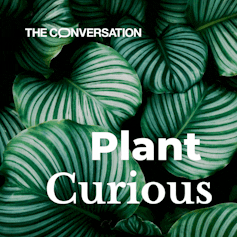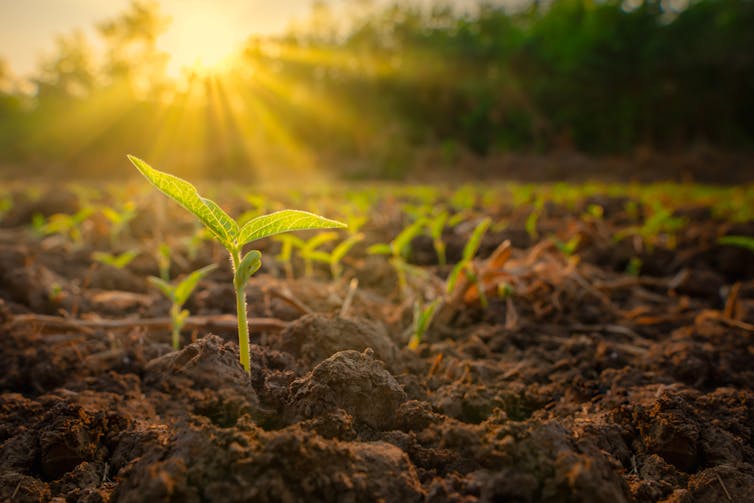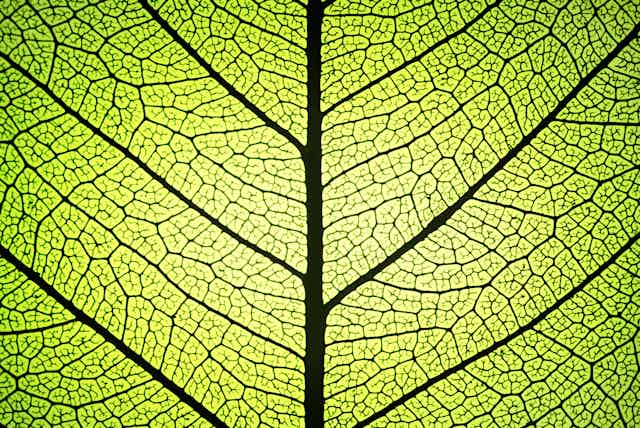Photosynthesis is the starting point for almost every food chain, sustaining most life on Earth. You would be forgiven, then, for thinking nature has perfected the art of turning sunlight into sugar. But that isn’t exactly true. If you struggle with life goals, it might reassure you to know even plants haven’t yet reached their full potential.
Every evolved trait is a trade-off between the benefit it provides and its cost in energy. The plants we domesticated for food are only as good at converting sunlight to sugar as they had to be to survive and reproduce. From a given amount of sunshine, most plants convert less than 5% of that light energy into biomass, and under some conditions, less than 1%.
We now have the knowledge and the tools to maximise photosynthesis in a range of food crops – but scientists aren’t just studying how we help plants become better at photosynthesis out of curiosity. Climate change-driven weather such as drought and flooding is destroying crops and threatening crop yields around the world. This research is about making sure we can grow enough food to feed ourselves.

Many people think of plants as nice-looking greens. Essential for clean air, yes, but simple organisms. A step change in research is shaking up the way scientists think about plants: they are far more complex and more like us than you might imagine. This blossoming field of science is too delightful to do it justice in one or two stories.
This article is part of a series, Plant Curious, exploring scientific studies that challenge the way you view plantlife.
Plants such as wheat sometimes mistakenly make a toxic substance called 2-phosphoglycolate which then has to be recycled inside the plant, costing it energy. Scientists call this photorespiration. It happens when an enzyme crucial to the photosynthesis process, rubisco, mistakenly latches on to an oxygen molecule instead of carbon dioxide.
Rubisco makes this mistake up to 40% of the time. It happens because there is now a lot more oxygen in the atmosphere than in the past, put there by the very first photosynthesisers, cyanobacteria – microscopic organisms found in water. Rising temperatures cause more photorespiration too.
If we could prevent this mistake, it would leave plants more energy for photosynthesis.
Capturing sunlight
Our research project, PhotoBoost, is looking at how to create a kind of internal bypass that reduces photorespiration in rice and potato plants, two of the world’s most important crops.
In the same way a coronary bypass diverts blood around narrow or clogged arteries in humans, the photorespiratory bypass gives plants the genetic tools they need to minimise rubisco’s mistake. Genes from cyanobacteria make this and other photosynthetic improvements possible because they host an array of enzymes for better sunlight management.
Other researchers are looking to plants such as maize, which have evolved their own means of dealing with photorespiration, as a source of inspiration – and genes – for rice.

We’re also improving the speed at which plants respond to changes in light intensity, as this affects photosynthesis too. Plants shut off their photosynthetic machinery if they get too much sun (when light is more intense), after which they can be slow to restart photosynthesising when it gets cooler again – for example, when clouds roll over.
A research group in the US recently showed that speeding up this photoprotection process in soybean can lead to a 33% increase in seed yield.
On PhotoBoost, we’re talking to researchers, agronomists and farmers all around the world to understand how to match the needs of society with this new frontier in plant science. According to Elizabete Carmo-Silva and Ana Moreira Lobo, colleagues at Lancaster University: “Climate change, declining yields and water stress constitute major challenges for food production this century.”
Their team investigates plant responses to light and temperature, paying particular attention to the rubisco enzyme. Higher yield is perhaps the most obvious gain from improving photosynthesis, but it will also help make plants more resilient to drought and heat stress.
New tools
A new tool in the crop breeder’s arsenal, gene editing, allows scientists to turn genes on and off, testing the effect they have on plant performance. Once we know their function, these genes can be suppressed, promoted or, as has been done in commercial crops since the 1990s, introduced through genetic modification.
At the Universidade Nova de Lisboa in Portugal, Nelson Saibo and Isabel Abreu told us the tools that plant breeders have are more “fine tuners” these days. Their team is using gene editing to improve photosynthesis in rice.
The potato farmers we recently spoke to in the east of England saw greater photosynthesis efficiency as a route to freeing up land for nature – for example, planting trees on ancient forest sites or restoring peatland in the Fens – as more efficient plants mean you need less of them to give the same crop yield. Their major concern was whether major UK retailers would be willing to champion genetically engineered crops.
As well as Photoboost, the European Union is funding other photosynthesis programmes through the Gain4crops (sunflower) and Capitalise (tomato, maize and barley) projects. Improving photosynthesis isn’t a silver bullet for many of the agricultural problems we face. But combining knowledge and new tools will help us get the most out of light.

